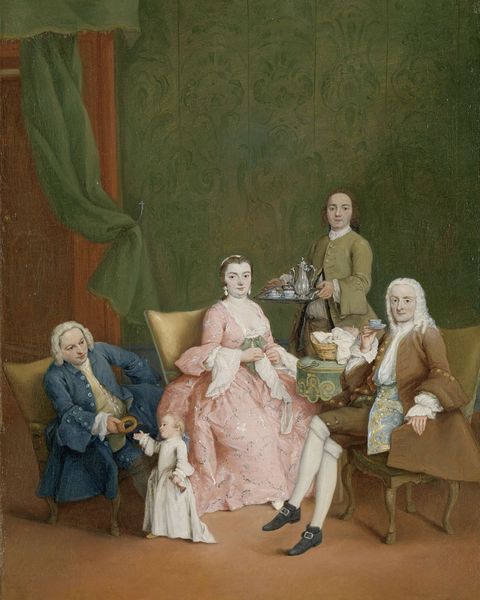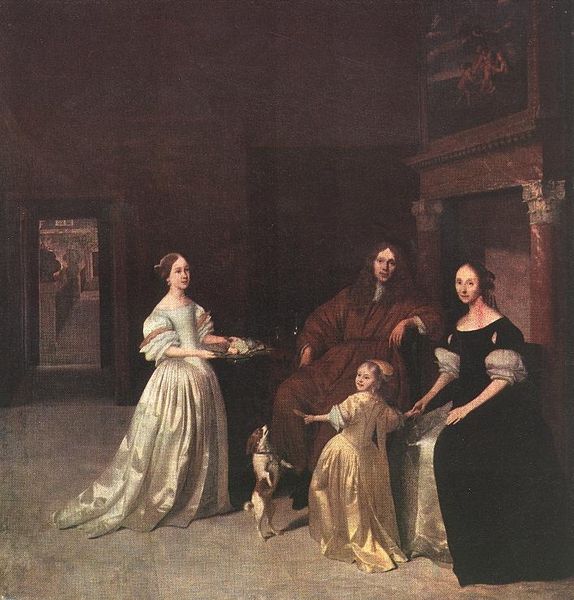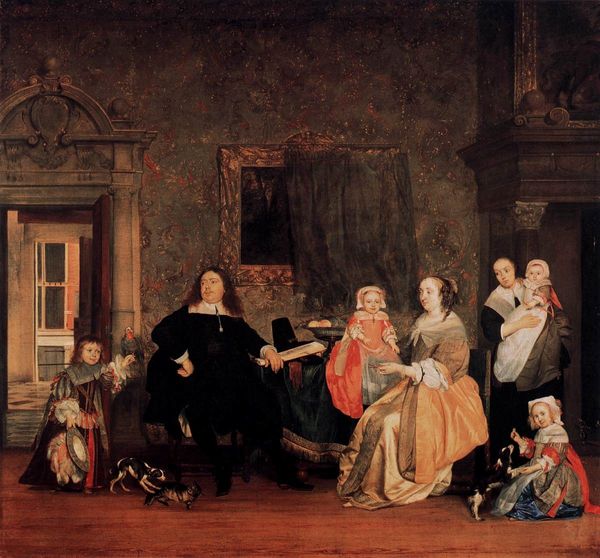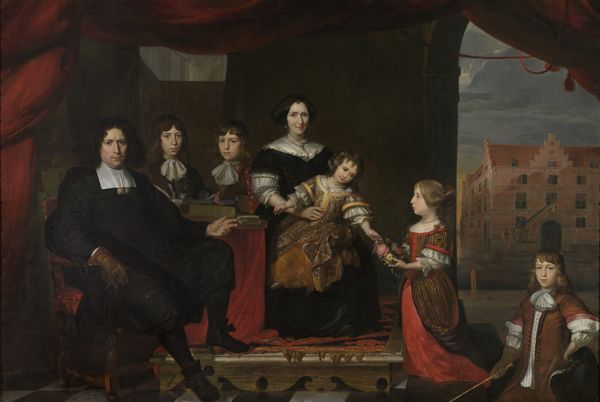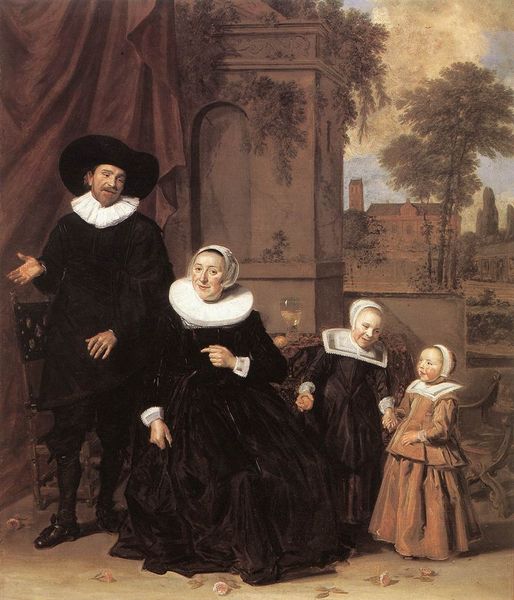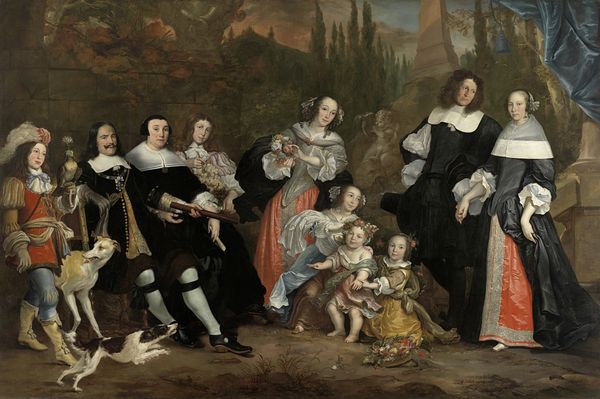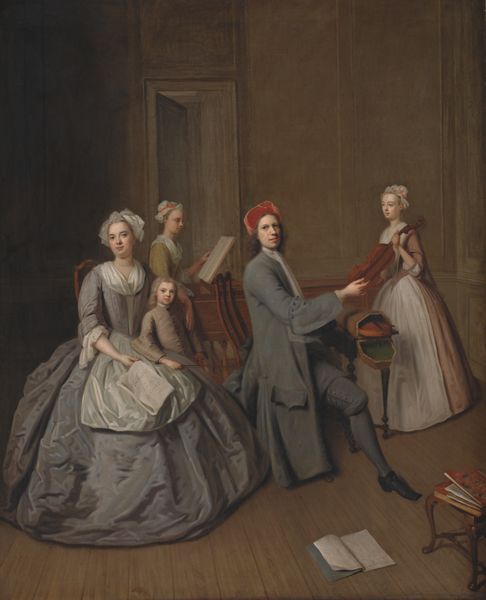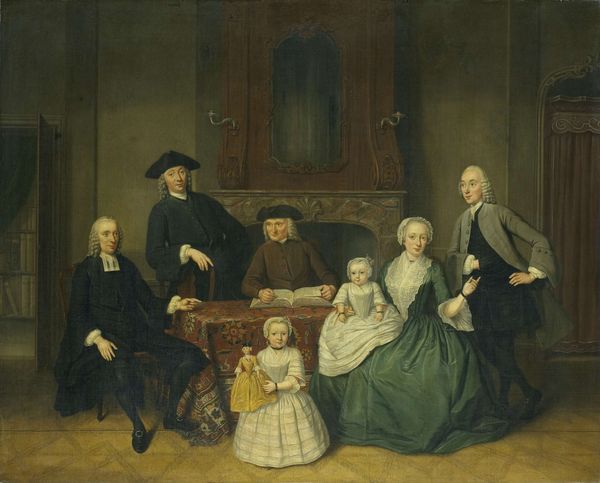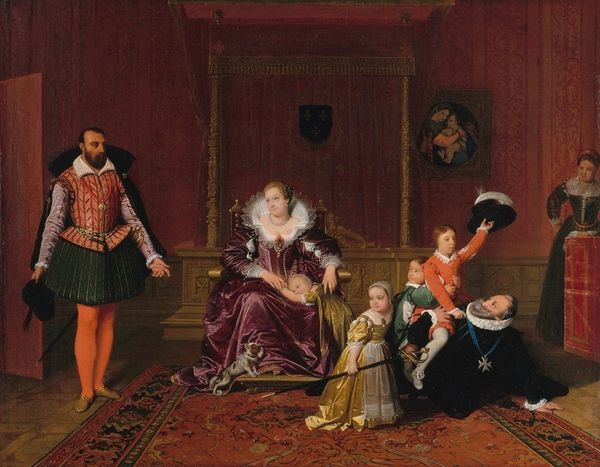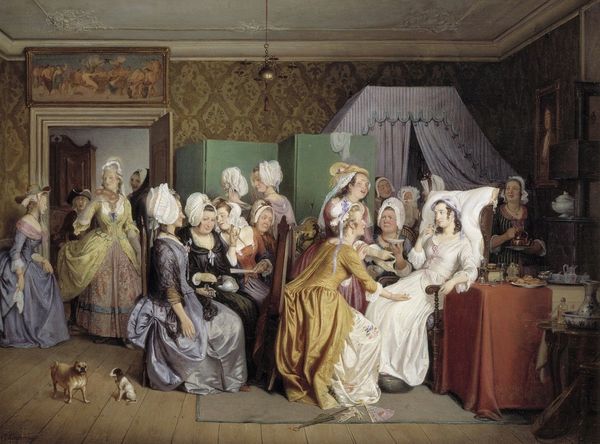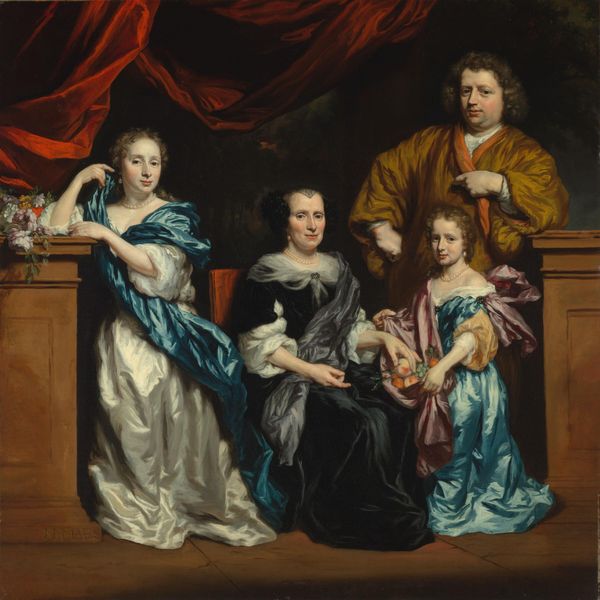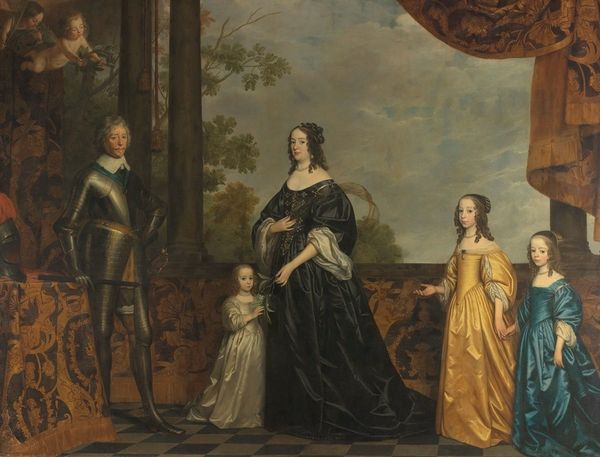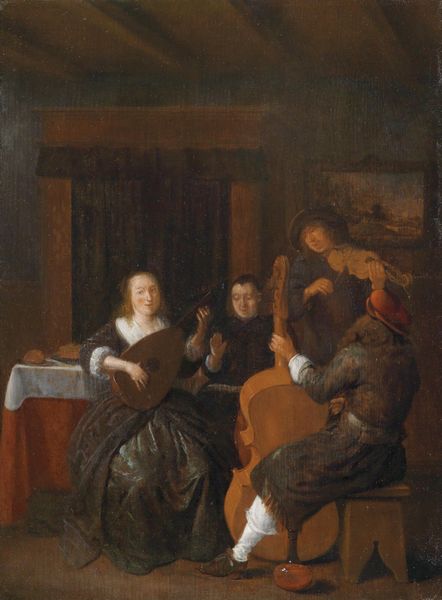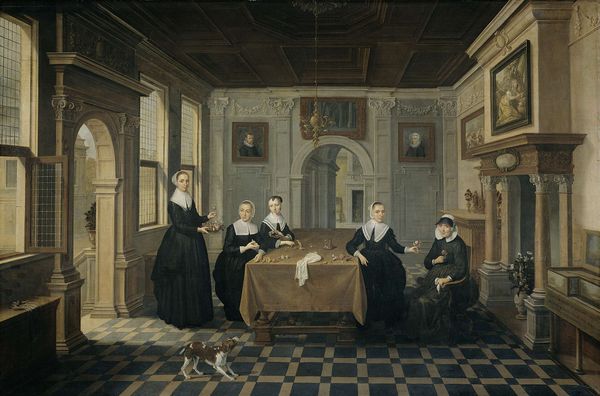
Reception of the Dutch ambassador Hieronymus van Beverningk by the Spanish queen-regent Maria-Anna of Austria, 2 March 1671 1671 - 1675
0:00
0:00
painting, oil-paint
#
portrait
#
baroque
#
painting
#
oil-paint
#
group-portraits
#
genre-painting
#
history-painting
Dimensions: height 70 cm, width 79 cm, depth 10.5 cm
Copyright: Rijks Museum: Open Domain
Curator: Welcome. Before us, we have Caspar Netscher's impressive oil on canvas, titled *Reception of the Dutch ambassador Hieronymus van Beverningk by the Spanish queen-regent Maria-Anna of Austria, 2 March 1671,* likely completed between 1671 and 1675, here on display at the Rijksmuseum. Editor: It’s a striking composition, formal and yet somehow intimate. The cool tones create a serene atmosphere, but there’s an undeniable undercurrent of power dynamics at play. It makes you wonder what exactly this reception entailed. Curator: Absolutely. The painting captures a pivotal moment in diplomatic history, revealing the evolving relationship between the Dutch Republic and Spain after the Treaty of Münster in 1648. Netscher, a skilled portraitist, immortalizes this event, catering to the Dutch desire for recognition and legitimacy on the European stage. The figure kneeling before the Queen Regent, Maria-Anna of Austria, is Ambassador van Beverningk. Editor: And he's presenting some kind of document. Look at how carefully everyone’s posture and attire has been considered to communicate wealth and social standing. I am particularly interested in the Queen Regent, front and centre in stark white with a solemn black veil. Curator: Her dress is certainly no accident, functioning to show a level of sobriety expected from the regent, highlighting her as a figure of power. While we are encouraged to admire her influence, it is equally valuable to acknowledge she held this title because of the position granted to her by men in her family. The group portrait is a spectacle of Baroque sensibility. The whole composition reflects not just individuals but also the political relationships between countries. Editor: The muted color palette and controlled poses also convey a sense of reserved authority. I wonder how this moment was perceived in the Netherlands, a rising Protestant power negotiating with the established Catholic Spanish crown? What biases did Netscher hold when portraying the scene for the public eye? Curator: The painting would likely have been commissioned to project the ambassador's and by extension the Republic’s success in gaining an audience with such an important figure. Netscher’s allegiance likely laid in conveying a specific message to elevate the Netherlands. Editor: It's fascinating how a single painting can unlock so many layers of political, social, and personal narrative, all while giving visual form to unspoken biases and societal forces that shape the world. Thank you for elucidating the key historical contexts for us. Curator: My pleasure, bringing visibility to these complex stories provides avenues for reimagining them with new meaning, something I hope visitors continue to engage with long after their visit today.
Comments
No comments
Be the first to comment and join the conversation on the ultimate creative platform.
